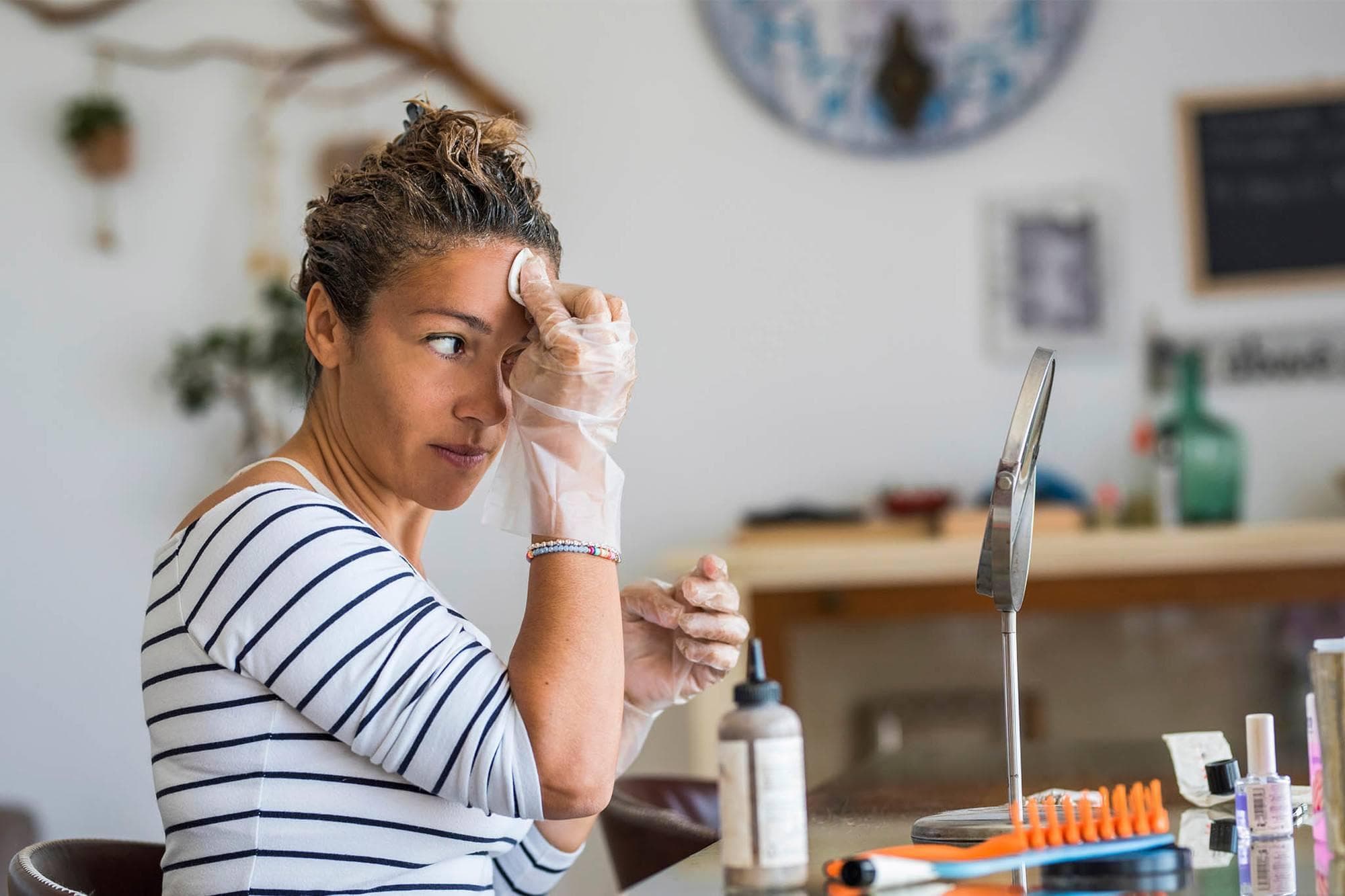Introduction
Dyeing your hair at home is a common practice, but it can be challenging when the dye ends up staining your skin. While these stains can be annoying and difficult to remove, there are several home remedies that can help you get rid of them safely and effectively. With the right approach, you can prevent these stains from becoming a problem, allowing you to enjoy perfect hair color without worrying about your skin.

Homemade Methods to Remove Hair Dye from Skin
When hair dye stains your skin, it's important to act quickly to prevent the stain from setting. Here are some effective home remedies:
- Olive Oil: Helps dissolve the dye without irritating the skin. Apply a small amount to the stained area and gently rub with a cotton ball.
- Toothpaste: Thanks to its abrasive properties, it can help remove stains. Apply a small amount to the stain, let it sit for a few minutes, and then rub with a damp cloth.
- Baking Soda: Mix with a little water to create a paste. Apply this mixture to the stain and gently rub until the stain fades away.
- Dish Soap: Its ability to break down oils can help remove dye stains. Use a small amount and rub the stain with a damp cloth.
Always test a small area of skin before applying any remedy to ensure it doesn't cause irritation. With these simple methods, you can remove dye stains without damaging your skin and without the need for harsh chemicals.

How to Prevent Hair Dye Stains on Skin Before Coloring
Preventing hair dye stains on the skin is much easier than removing them afterward. Here are some useful tips:
- Apply Petroleum Jelly or Moisturizer: Apply a layer to the areas most likely to stain, such as the hairline, ears, and neck, to prevent the dye from adhering to the skin.
- Wear Gloves: Protect your hands from direct contact with the dye and consider covering your ears and neck with a towel or protective cape.
- Prepare the Work Area: Have paper towels, cotton swabs, and an old towel ready to clean up any accidental dye spills.
- Choose Dyes Less Likely to Stain: Opt for dyes with fewer strong pigments or those designed to be gentler on the skin.
With these precautions, you can significantly reduce the risk of staining your skin while dyeing your hair.

What to Do If Hair Dye Causes Skin Irritation
Sometimes, hair dye can cause skin irritation, especially if you have sensitive skin or if the dye contains strong chemicals. If you experience redness, itching, or burning after applying the dye, the first thing to do is wash the affected area with cool water and mild soap to remove any product residue. Avoid scratching or rubbing the skin, as this could worsen the irritation.
After cleaning the skin, it’s recommended to apply a soothing cream or aloe vera gel to reduce inflammation and discomfort. If the irritation persists or worsens, it’s important to consult a dermatologist for proper treatment. Additionally, to avoid future reactions, consider performing a patch test with the dye before applying it to your entire hair and choose products designed for sensitive skin.

Does Coconut Oil Help Remove Hair Dye from Skin?
Coconut oil is known for its multiple benefits for the skin, and one of them is its ability to help remove hair dye. Thanks to its moisturizing and soothing properties, coconut oil can be a natural and effective option to dissolve the dye without causing irritation. To use it, simply apply a small amount of coconut oil to the stained area and gently massage in circular motions. After a few minutes, wipe off the excess oil with a clean, damp cloth.
In addition to being effective, coconut oil is safe for most skin types, including sensitive skin. Unlike other more abrasive methods, such as using alcohol or acetone, coconut oil nourishes the skin while helping to remove stains. This method is especially useful if you prefer to avoid harsh chemicals and opt for more natural and gentle alternatives.

Differences Between Permanent and Semi-Permanent Dyes on Skin
Permanent and semi-permanent hair dyes have different effects on the skin due to their composition and the way they adhere to the hair. Permanent dyes contain stronger chemicals, such as hydrogen peroxide and ammonia, which allow the color to penetrate deeper into the hair but also make the stains on the skin more difficult to remove. These stains tend to be more persistent and may require more intensive cleaning methods.
On the other hand, semi-permanent dyes do not contain ammonia and usually have a lower concentration of peroxide, making them less harsh on both the hair and skin. Stains from these dyes are generally easier to remove and, in many cases, disappear with a simple wash with water and soap or with gentle home remedies like coconut oil. Knowing the difference between these two types of dyes will help you choose the right cleaning method and prevent stubborn stains on your skin.

Conclusion
Removing hair dye from the skin can be challenging, but with the right methods and a little patience, it’s possible to keep your skin stain-free and protected. Whether you prefer home remedies like coconut oil or preventive techniques, taking care of your skin during the dyeing process is essential. Additionally, understanding the differences between permanent and semi-permanent dyes will help you make informed decisions to avoid difficult stains. With these tips, you can enjoy your new hair color without worrying about skin stains.





